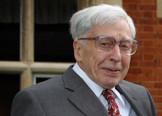Did Nobel laureate Robert Edwards get his gong for enabling eugenics?
By Michael Cook,
BioEdge
| 08. 02. 2020
If the “cancel culture” is gunning for eugenicists, there are more than enough candidates. One of the most prominent is Robert Edwards, who won the Nobel Prize for Medicine in 2010 for developing in vitro fertilisation.
As Gina Maranto, a writer for the Biopolitical Times, reminds readers, he was a dyed-in-the-wool eugenicist:
Edwards was a long-time member and trustee of the UK’s Eugenics Society and then, under its new name, the Galton Society, as Osagie Obasogie detailed in Scientific American in 2013. In a December 1970 article in the same publication, Edwards and [Ruth] Fowler [his wife] foresaw and embraced the possibility that IVF would enable the selection of embryos according to their genetic characteristics, including “choosing male or female blastocysts.”
They also envisioned other manipulations of embryos, writing that while such experiments would present “challenges to a number of established social and ethical concepts,” they would bring great rewards. Edwards implicitly acknowledged the eugenical implications of his work in 1999 when he said, “Soon it will be a sin of parents to have a child that carries the...
Related Articles
By Courtney Withers and Daryna Zadvirna, ABC News | 12.03.2025
Same-sex couples, single people, transgender and intersex West Australians will be able to access assisted reproductive technology (ART) and surrogacy, almost a decade after reforms were first promised.
The landmark legislation, which removes the requirement for people to demonstrate medical...
By Rachel Hall, The Guardian | 11.20.2025
Couples are needlessly going through IVF because male infertility is under-researched, with the NHS too often failing to diagnose treatable causes, leading experts have said.
Poor understanding among GPs and a lack of specialists and NHS testing means male infertility...
By Grace Won, KQED [with CGS' Katie Hasson] | 12.02.2025
In the U.S., it’s illegal to edit genes in human embryos with the intention of creating a genetically engineered baby. But according to the Wall Street Journal, Bay Area startups are focused on just that. It wouldn’t be the first...
Several recent Biopolitical Times posts (1, 2, 3, 4) have called attention to the alarmingly rapid commercialization of “designer baby” technologies: polygenic embryo screening (especially its use to purportedly screen for traits like intelligence), in vitro gametogenesis (lab-made eggs and sperm), and heritable genome editing (also termed embryo editing or reproductive gene editing). Those three, together with artificial wombs, have been dubbed the “Gattaca stack” by Brian Armstrong, CEO of the cryptocurrency company...




